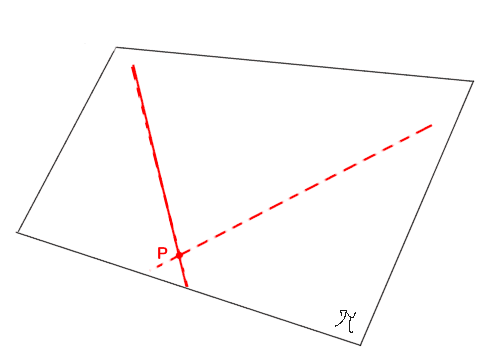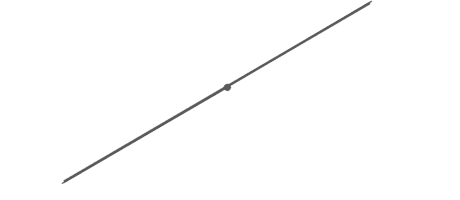Elements (2)
Chiefly about Lines
Line is extension, not place.
Hence,
- a line has no place (no “location”),
Accordingly,
- a line has no size,
‘Ends’
A line has no ends, because- ends are points
- lines are not points
- and lines do not consist of points.
Incidence
- Two points can have a line in common,
- –but need not, because elements do not define each other.
- Two planes cannot avoid having a line in common.
- Two lines can have a point in common,
- –but need not, because elements do not define each other.
- If two lines have either a plane or a point in common, they must have both a point and a plane in common.
- If two lines DO NOT have either a point or a plane in common, they must have neither in common, and are skew.
‘Motion’
If a projective line-without-ends is to be moved, it must be moved projectively, namely by projective transformation, and must necessarily move as- an unended thing,
- a line can move around just one point (P →),
- and in just one plane (π →).
- can move only by rotation, and
- cannot move by translation.
One immediate consequence is that
there is no linear (point-to-point) distance between lines,
because lines are not points.
Please do take careful note that by the foregoing we have established the conditions that must be present for lines to move, but not the actual means by which they are to be moved. Whatever else these means may be, they must be projective, and will probably involve iterative transformation, because nothing 'physical', such as motive force, is involved at all. We have here only to do with pure geometry.

This picture is not to be taken too seriously. It is an animated cartoon, a 'visual aid',
a streak of pixels literally seeming to move because of automatic processes of
perception in the viewer—currently, you!
It is not an actual, moving line.
Real geometric elements do not emit, reflect or refract light,
so are
permanently invisible.
It follows at once that
by which we see that the words, ‘extension’, and, ‘straightness’, are synonyms for the quality that defines a line.
